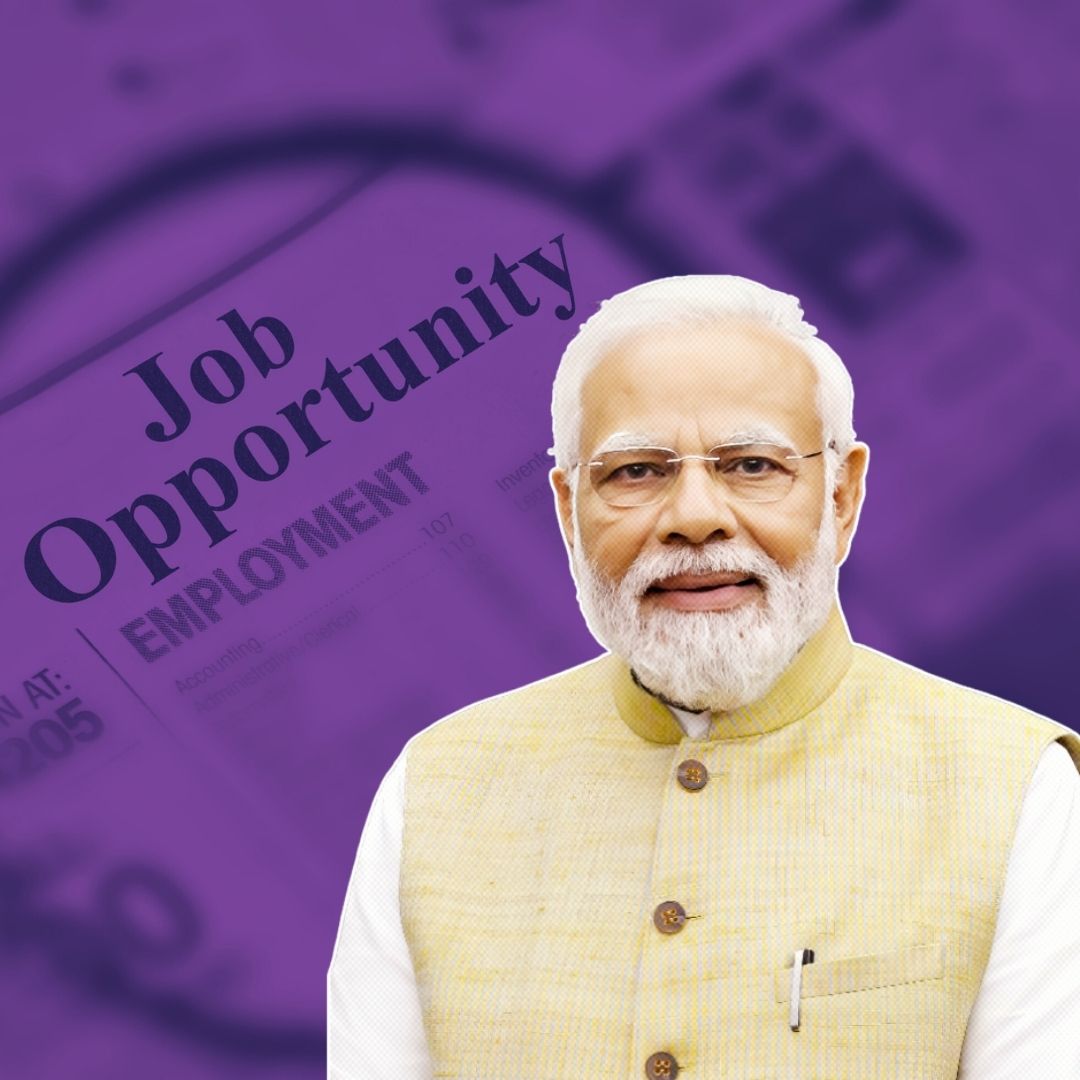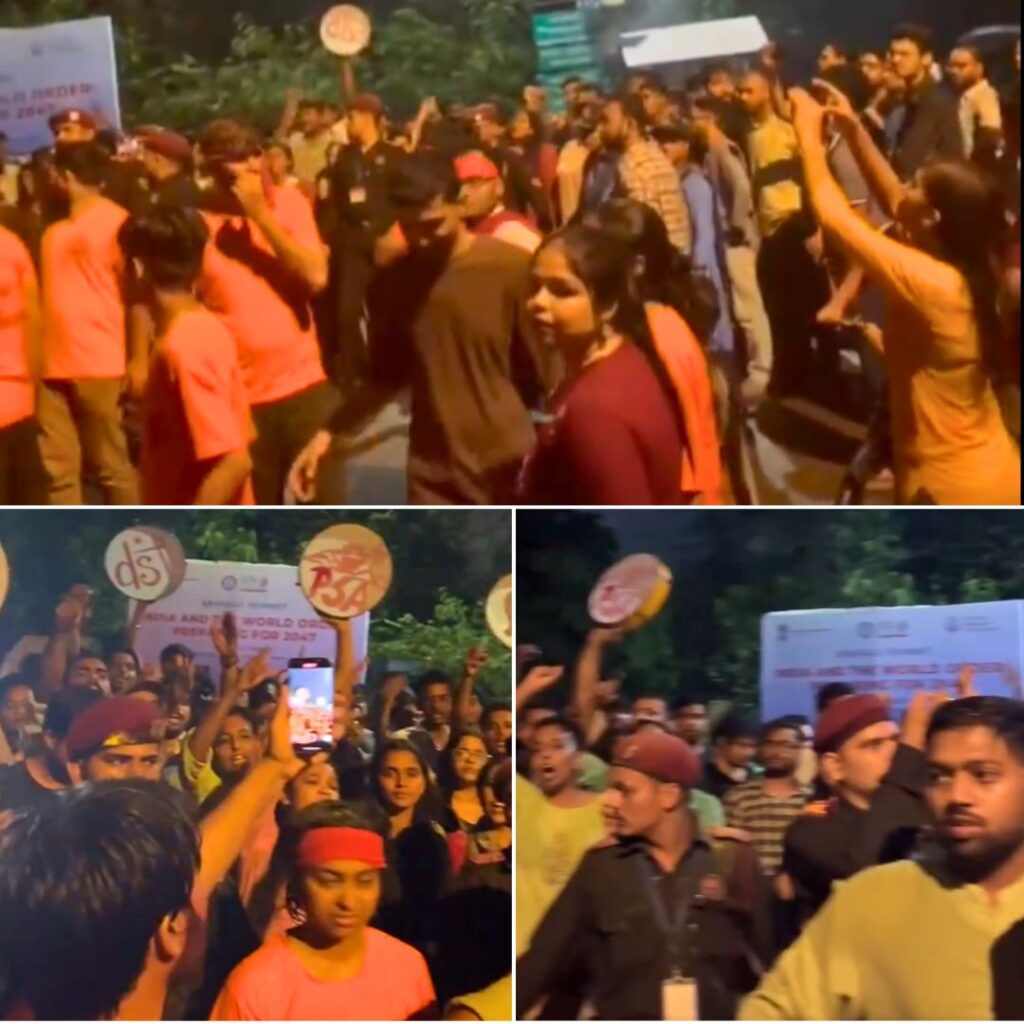The Ministry of Labour and Employment announced that the PM Viksit Bharat Rozgar Yojana (PM-VBRY) will launch on 1 August 2025 and run until 31 July 2027, with a budget outlay of ₹99,446 crore. The scheme aims to create over 3.5 crore new formal jobs across India, including about 1.92 crore jobs for first-time workers registered with the Employees’ Provident Fund Organisation (EPFO).
It offers financial incentives up to ₹15,000 per month for eligible new employees earning up to ₹1 lakh and monthly incentives ranging from ₹1,000 to ₹3,000 per employee to employers for sustained hiring. With a focus on manufacturing and other sectors, the initiative aligns with Prime Minister Narendra Modi’s vision of a developed India by 2047 and aims to formalise employment, expand social security, and promote financial inclusion.
Incentives and Eligibility: Boosting Formal Employment and Financial Literacy
The PM-VBRY consists of two parts. Part A provides incentives to employees who join formal jobs and register with the EPFO for the first time. Eligible employees earning up to ₹1 lakh monthly will receive an amount equivalent to one month’s EPF wage (capped at ₹15,000), paid in two instalments: the first after six months of continuous employment, and the second upon completion of 12 months plus a financial literacy programme.
Part of the incentive will be deposited into savings instruments to encourage long-term financial planning. Part B targets employers, offering monthly incentives based on employee wages—₹1,000 for salaries up to ₹10,000, ₹2,000 for ₹10,001-₹20,000, and ₹3,000 for salaries above ₹20,000 up to ₹1 lakh—paid for two years, with manufacturing sector benefits extended to the third and fourth years.
Employers must create a minimum of two additional jobs if they have fewer than 50 employees, and at least five new jobs if they have 50 or more, with new hires employed continuously for six months to qualify.
A Rozgar Revolution is Just Around the Corner!
— Ministry of Labour & Employment, GoI (@LabourMinistry) July 26, 2025
PM Viksit Bharat Rozgar Yojana, a scheme that supports first-time employees and formal job creators, will begin in just 6 days.
🗓️ Registration Starts: 01.08.2025
Stay tuned for more!#PMViksitBharatRozgarYojana pic.twitter.com/vBIb4ITFIH
Background and Context: Reviving Formal Sector Jobs in a Post-Pandemic Economy
The scheme, renamed from the earlier Employment Linked Incentive (ELI) scheme, is a key component of the government’s broader employment-led economic growth strategy post-COVID-19 disruptions. It targets formal job creation across sectors, especially manufacturing, to address India’s informal workforce challenges.
Labour Minister Bhupendra Yadav described the initiative as “a landmark step towards empowering youth and catalysing inclusive economic development.” Payments to employees will be credited directly via the Aadhaar Bridge Payment System (ABPS), while employer incentives will be transferred to PAN-linked bank accounts to ensure transparency. The scheme stands as a vital pillar in Prime Minister Narendra Modi’s developmental vision to make India ‘viksit’ (developed) by 2047.
The Logical Indian’s Perspective
The PM Viksit Bharat Rozgar Yojana marks a commendable stride toward addressing India’s employment challenges by incentivising genuine job creation and formalisation. By supporting new workers financially and encouraging employers to grow their workforce, the scheme promotes dignified employment with social security and encourages financial literacy.
However, vigilant monitoring and inclusive implementation are crucial to prevent misuse and ensure equitable access, particularly for marginalised youth and smaller enterprises. Complementing incentives with skills development and stakeholder dialogue can maximise benefits.
"PM Viksit Bharat Rozgar Yojana: Empowering First-Time Employees & Boosting Job Creation!"
— EPFO (@socialepfo) July 25, 2025
✅ Up to ₹15,000 incentive for new EPFO-registered employees
✅ Support of ₹3,000/month for employers hiring additional staff
✅ Special focus on financial literacy and manufacturing… pic.twitter.com/mjhJwqrgfe









